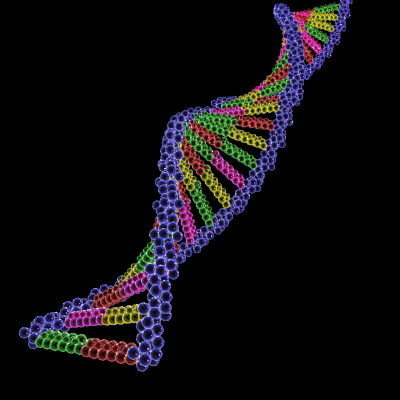Highlights
- •Increased minor spliceosome activity is associated with prostate cancer progression
- •Minor intron-containing genes are overrepresented as direct interactors with oncogenes
- •Minor splicing alters splice patterns of important prostate cancer drivers
- •Downregulating the minor spliceosome creates a prostate cancer vulnerability
Summary
The evolutionarily conserved minor spliceosome (MiS) is required for protein expression of ∼714 minor intron-containing genes (MIGs) crucial for cell-cycle regulation, DNA repair, and MAP-kinase signaling. We explored the role of MIGs and MiS in cancer, taking prostate cancer (PCa) as an exemplar. Both androgen receptor signaling and elevated levels of U6atac, a MiS small nuclear RNA, regulate MiS activity, which is highest in advanced metastatic PCa. siU6atac-mediated MiS inhibition in PCa in vitro model systems resulted in aberrant minor intron splicing leading to cell-cycle G1 arrest. Small interfering RNA knocking down U6atac was ∼50% more efficient in lowering tumor burden in models of advanced therapy-resistant PCa compared with standard antiandrogen therapy. In lethal PCa, siU6atac disrupted the splicing of a crucial lineage dependency factor, the RE1-silencing factor (REST). Taken together, we have nominated MiS as a vulnerability for lethal PCa and potentially other cancers.
Introduction
Splicing results in the removal of introns and the ligation of exons to produce mRNA encoding a full-length protein. A majority (>99.5%) of the introns share consensus sequences at the 5′ splice site (SS), the branch point sequence (BPS), and 3′ SS, which are recognized by small nuclear RNAs (snRNAs) plus proteins of the major spliceosome (U1, U2, U4, U5, and U6 snRNAs). However, <0.5% set of introns possess divergent 5′ SS, BPS, and 3′ SS consensus sequences requiring an alternate spliceosome (U11, U12, U4atac, U5, and U6atac snRNAs) called the minor spliceosome (MiS). Despite the small number (∼714) of minor intron-containing genes (MIGs), they are highly enriched in critical biological processes, including cell proliferation and differentiation, which is reflected in many developmental diseases, such as microcephalic osteodysplastic primordial dwarfism type 1 (MOPD1), Rofiman syndrome, early onset cerebellar ataxia (EOCA), isolated growth hormone defficiency (IGHD), and others.1,2,3,4,5,6 As minor introns are also present in many critical oncogenes, a thorough understanding of the interplay between minor intron splicing and cancer is warranted.7 There is a reliable association of MiS components with an increased risk of scleroderma (U11/U12-65K protein), acute myeloid lukemia (AML) (U11-59K protein), and familial prostate cancer (PCa) (U11 snRNA).8,9,10 Given the above, we posit that the MiS and MIG expression play vital roles in cancer progression, a hypothesis we explore here using PCa as an exemplar cancer.
Although androgen deprivation therapy (ADT) is often used to treat advanced PCa, some patients develop ADT-resistant PCa, which is treated with androgen receptor signaling inhibitors (ARSi), such as enzalutamide and abiraterone. Unfortunately, intrinsic or acquired resistance to ARSi in the form of castration-resistant prostate cancer (CRPC) eventually develops in this ultimately lethal disease. In CRPC, ARSi-resistance can occur via intra-tumoral heterogeneity driven by re-activation of the AR axis11,12 or transdifferentiation (also known as lineage plasticity) from adenocarcinoma (CRPC-adeno) to neuroendocrine PCa (CRPC-NE), which is highly lethal.13
Despite sharing the genomic landscape, CRPC-adeno and CRPC-NE have dramatically distinct transcriptomes, including their splicing landscape, suggesting a critical role of splicing in PCa transdifferentiation.14,15 Indeed, treatment-induced reshaping of alternative splicing (AS) pattern in PCa has been proposed to contribute to therapy resistance and cellular plasticity toward stemness.15 Major spliceosome-mediated splice pattern shifts, including intron retention and/or isoform switching of PCa-relevant genes, have been extensively studied in prostate tumorigenesis and progression.9,15,16,17 However, little is known about the pathways controlling non-canonical or minor intron splicing,
Here, we show that MIG expression and MiS activity are tightly linked to (prostate) cancer onset/progression and that AR signaling regulates MiS function as PCa progresses to CRPC-adeno. Minor intron splicing might regulate CRPC-adeno to CRPC-NE transition via the AS of RE1-silencing fact (REST). A crucial MiS component, U6atac snRNA, was elevated across PCa metastasis, thereby resulting in more efficient minor intron splicing with PCa progression. Thus, we downregulated U6atac, which decreased the growth of common cell line and patient-derived organoid models of advanced PCa. In fact, U6atac knockdown (KD) outperforms current therapeutics, such as the combination of enzalutamide with EZH2 inhibition. Our work elucidates a so far unexplored pathway, the MiS, as a point of entry for therapeutics against lethal PCa, a strategy that could extend to other cancer types.
Results
MIGs play a crucial role in cancer onset and progression
Because MIGs are enriched in cell cycle and survival,18,19 we investigated the abundance of MIGs in molecular programs downstream of oncogenes. Analysis of the protein-protein interactome (PPI) of oncogenes showed that MIG-encoded proteins were enriched among proteins that interact with proteins encoded by oncogenes. We computed the shortest distance d of all proteins encoded by oncogenes and found significant enrichment of MIGs in the immediate network neighborhood of oncogenes (permutation test: d = 1,2; p < 10E-5) and significant dilution at higher distances (d > 3, p < 10e−5) (inset, Figure 1A; STAR Methods). We observed significant enrichment of MIG-encoded proteins as immediate interactors of 26 verified PCa oncogenes (inset Figure 1A; Table S1).20 In fact, MIGs were significantly (p < 3 × 10−5) enriched in some of the largest PPI networks formed by oncogenes involved in all cancers (Figure 1A, right of the bell curve), and for 26 PCa oncogenes (permutation test, p < 6.8 × 10−4). For example, 17 PCa oncogenes (hubs) were connected through 72 MIGs (spokes) (Figure 1B [inset] and 1C), suggesting that MIG-encoded proteins are tied to multiple oncogenic pathways….







